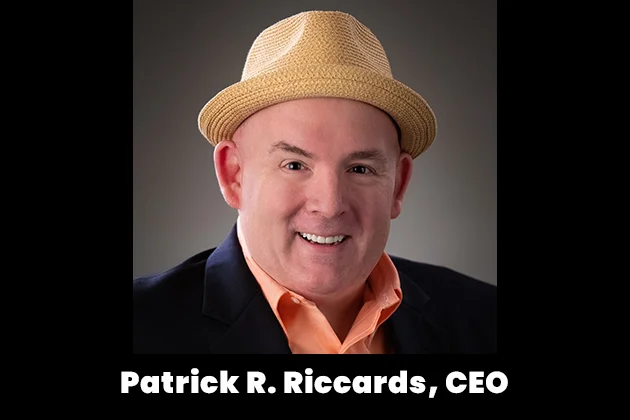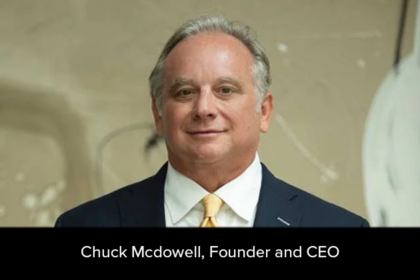Today, prioritizing innovation has become the key to unlock unprecedented opportunities of business growth. The business world is full of revolutionary approaches that open-endedly explore ideas by pushing the boundaries of innovation. The Driving Force Institute is one such revolutionary approach, that was conceptualized to transform the future of history education.
Patrick R. Riccards, the man behind the Driving Force Institute, is a visionary leader thriving to improve the teaching and learning of American history through short, provocative films that can spark an interest in history in even the most dispassionate student. Through his innovative approach, unwavering dedication and relentless pursuit for excellence, Patrick is on the verge of reshaping the nation’s education landscape for future generations.
Tracing Back The Origin
The Driving Force Institute was actually inspired by rejection. The son of a presidential historian, Patrick’s passion for history was instilled in him from a young age. Years ago, while serving as the chief communications and strategy officer at the Woodrow Wilson Foundation, Patrick did a national survey of high school students, which revealed that today’s learners find history boring and irrelevant. Teachers also stated that traditional history textbooks were not engaging enough to stoke students’ interests.
With an unwavering passion for educational growth and strategic approach to business, he took a deep a dive into how to transform the teaching and learning of American history. He explored various teaching methods and settled for short-form videos. But the Woodrow Wilson Foundation, which was incubating the project, did not see a future in that and terminated the project. Patrick’s jobwas also eliminated in the process.
Patrick always believes in what is possible. Undeterred despite rejection, he acquired the few assets developed while at the Foundation and went on to launch Driving Force Institute.
Turning Rejection Into Success
Patrick merged his skills and profound expertise to create the Driving Force Institute. Recounting his journey, Patrick shares, “1 believed that we could make American history interesting and relevant to today’s learners. We just had to deliver content in a way that those learners want to consume. They don’t want dusty old textbooks like their parents or grandparents used. They want engaging, interesting content. So despite the initial rejection, we moved forward, developing content that was interesting to both educators and students. We failed often in the early stages, but failed fast and learned from each of those setbacks. Today, we are reaching more than 50 million users.”
Revolutionizing The Way of Teaching American History
The teaching of American history is now messier and more Controversial than it ever has been. Some try to be very selective in what they teach, chOosing to stick to events and dates that won’t rock the boat or instigate an angry parent or school board member. Driving Force Institute actually takes the opposite approach. They embrace the messy, telling the stories that may be to0 contrOversial or radioactive for the classroom. They take on stories that are embraced by half the population, while being condemned by the other half.
“We believe in telling the full history, both because it is our obligation and it is what today’s learners want,” elaborates Patrick. “If we share a story that makes your blood boil, I guarantee you we have another that you’l embrace with all your positive emotions. We don’t whitewash history. We tell t in full technicolor, with all of the flaws and shortcomings that make our nation’s history as meaningful as it is.”
«We believe in telling the full history, both because it is our obligation and it is what to day’s learners want.”
Strategic Approach To Stay Competitive And Relevant
Driving Force Institute is not the first company to use video to improve instruction. But they have a unique approach. Patrick believes that history doesn’t only have to be taught through a traditional textbook. To show the relevance of American history, they need to ensure that the delivery is as relevant as the content. So the Institute focuses on providing content through short-form videos. They deliver stories that are often overlooked in textbooks. They use the technology to meet learners where they are and how they choose to consume information.
All the films that are produced by the institute are available free of charge, both on YouTube and on untoldhistory.org. They have worked with distribution partners and partnered with Makematic, a international film production company to help reach a wider audience. “It isn’t just about making a great product, it is about making sure that milions of eyeballs see that product, ” Patrick says.
Embracing Failure
As an innovator, Patrick has always sought to push boundaries and challenge the status quo. He is never afraid of failures. Patrick believes that the key to innovation is to embrace failure. “Innovation is about change and improvement. We don’t get there by playing it safe.
We get there by trying, by experimenting, by failing, by learning from it. When you allow yourself to try anything, when you surround yourself with individuals smarter and more passionate than you, anything is possible,” Patrick states.
Future Outlook
In three years, the United States will be celebrating its 250th birthday. Patrick wants to make the most of this opportunity. He thinks there is no better way to celebrate the nation’s 250th birthday than to present its learners with the gift a comprehensive video curriculum of what happened in those two and a half centuries, and why today’s learners should know it, understand it, and care about it.
“Over the last three years, we have shown the power of short films to tell the untold, yet important, stories in American history. We’ve produced 500 films that are accessed by 50 million users. Over the next three years, we are excited take on, with some terrific partners, a new initiative to teach the essentials of American history,” Patrick adds.
Words of wisdom
Patrick advises young entrepreneurs to approach every professional opportunity not for what it is today, but for whether it provides the canvas to create and build what they dream to achieve. He says, “Study and learn from other industries. Gain lessons from past failures. Use rejection to inspire and motivate. Most importantly, ensure that thinking is simply the first step on the path to doing, improving, and succeeding. Teddy Roosevelt once declared we need to »dare mighty things.’ That’s what this work, particularly social entrepreneurism, is all about.”










